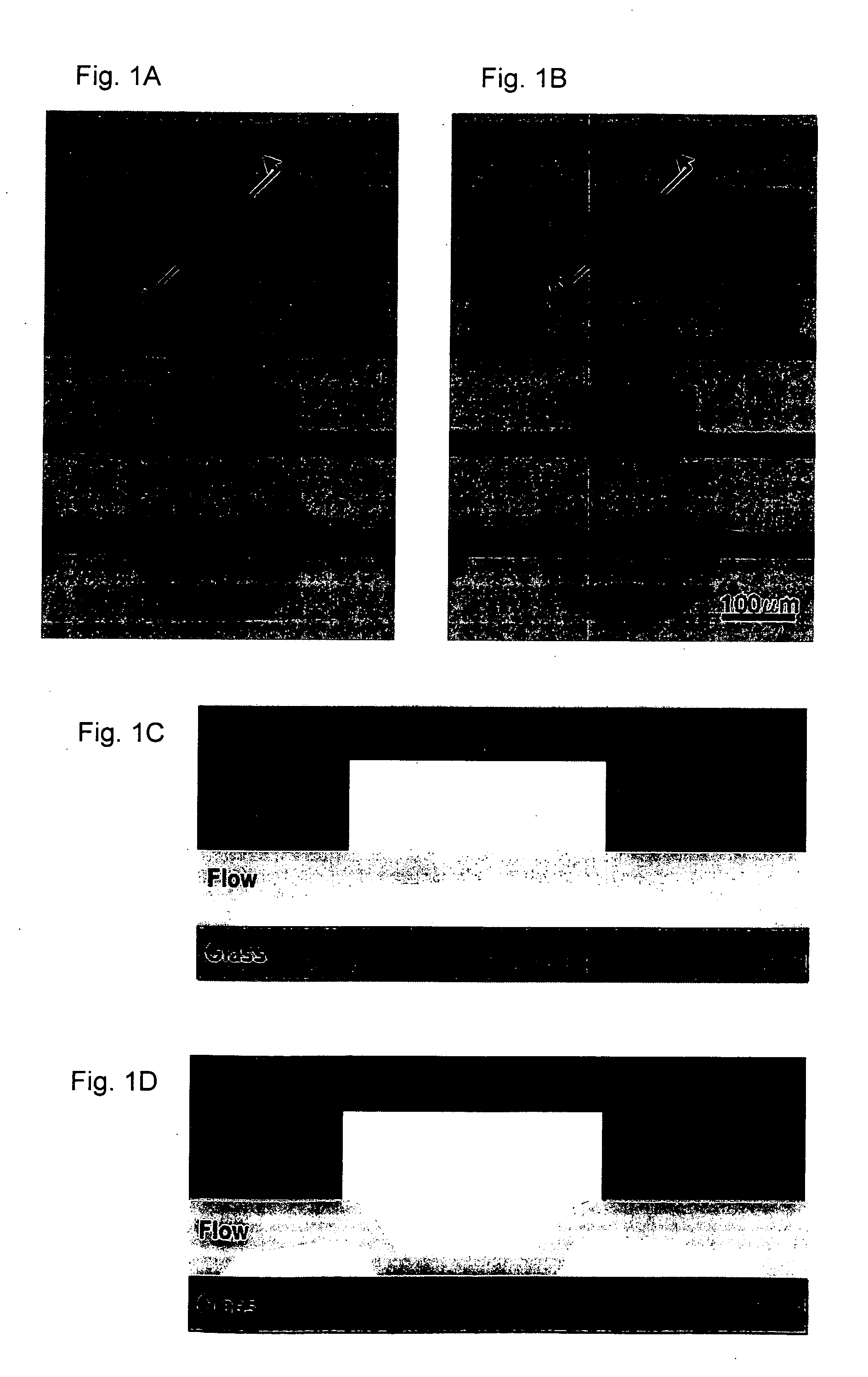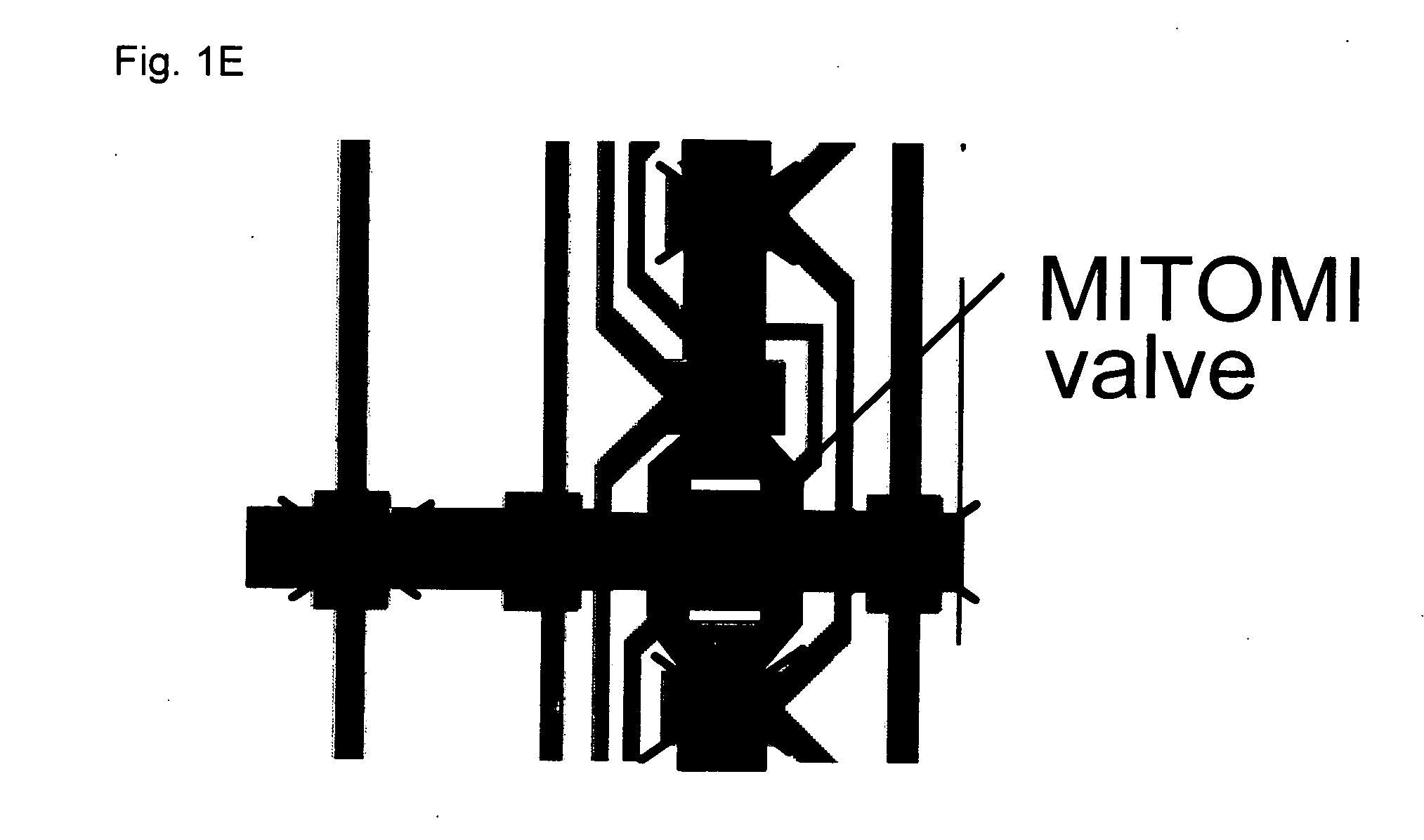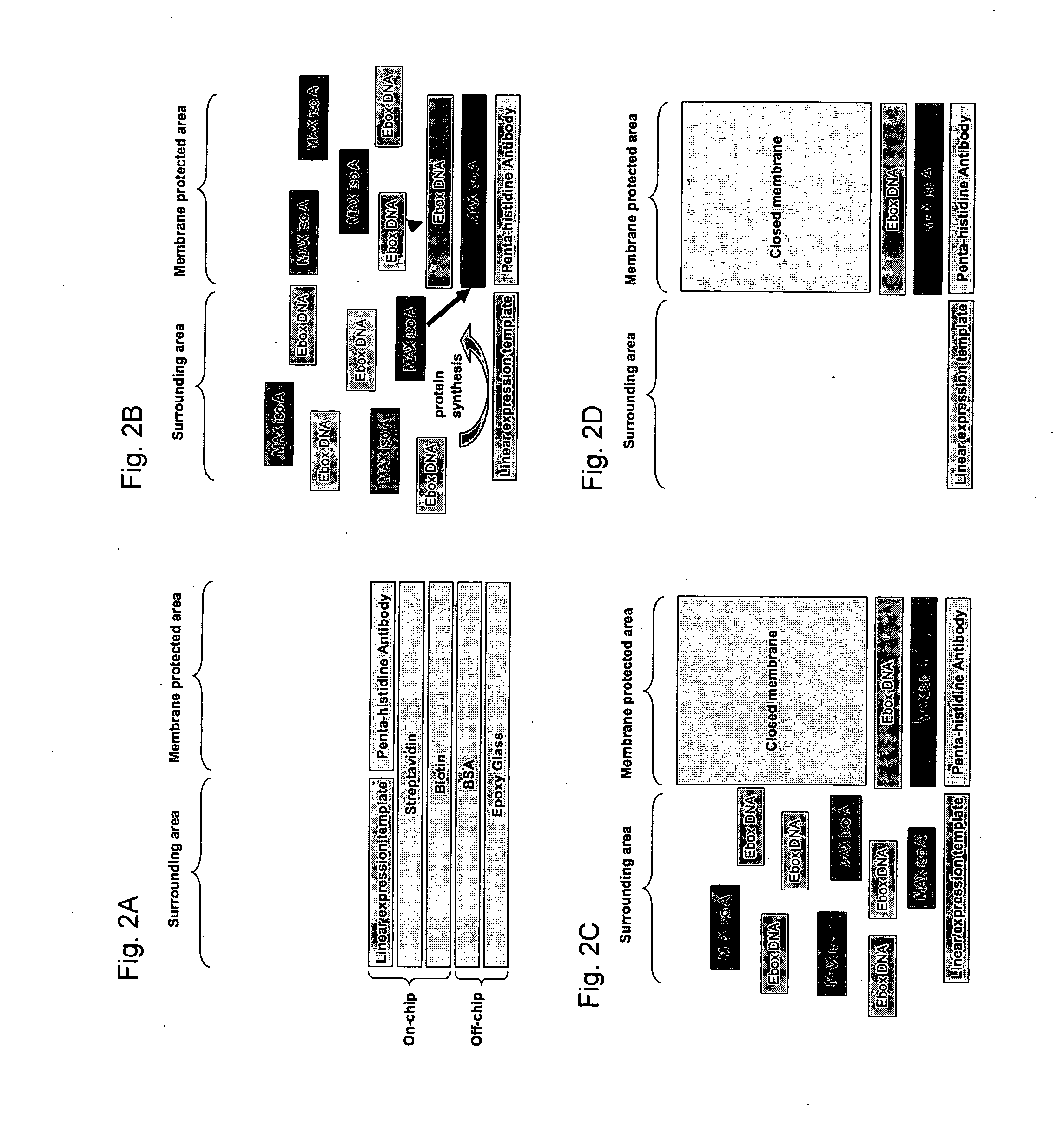Mechanically induced trapping of molecular interactions
a technology of molecular interactions and mechanical induction, which is applied in the field of microfluidic devices, can solve the problems of increasing the number of measurements needed in an already logistically challenging process, rapid loss of bound material or little bound material, and reducing pressure
- Summary
- Abstract
- Description
- Claims
- Application Information
AI Technical Summary
Benefits of technology
Problems solved by technology
Method used
Image
Examples
example 1
Surface Patterning and MITOMI
[0141] This example describes a prototypical MITOMI device. A device was fabricated, a protein-based surface chemistry for protein binding was generated, and protein capture and MITOMI were carried out.
[0142] Additionally the effect of varying chamber diameters on the effective surface contacting area was also studied.
[0143] A) Flow and Control Mold Manufacturing
[0144] Two 3-inch silicone wafers were treated with hydroxy-methyl silane (HMDS, Sigma) for 2 minutes followed by spin coating with the positive tone photoresist SPR 220-7.0 (Rohm & Haas) in two consecutive spin steps. The first spin step was performed at 500 rpm for 5 seconds followed by 3000 rpm for 60 seconds. The wafers were then soft-baked at 105° C. for 90 seconds. The flow and control patterns were transferred to the molds using two separate transparencies printed with their respective patterns at 20,000 dpi (CadArt). Exposure was done at 365 nm on a MA-6 Mask ali...
example 2
Establishing Detection Sensitivity Levels
[0155] In order to address the question what the lower detection bounds are for this system we determined at what concentrations non-specific trapping occurs. To do so a device similar to the one described in Example 1 was used. We tested three different Ebox-DNA sequences: Ebox, Er and Enot containing the following E-box binding sequences respectively: CACGTG, CAGGTG and TGATGC. MAX iso A binds the Ebox sequence with a strength in the nanomolar range with decreasing affinities for Er and Enot. Enot binds only non-specifically via interactions with the phosphate backbone and its' affinity is considered negligible falling into the μM regime and considered non-specific. These three sequences when tested in our system return the approximate affinities of 166 nM, 1.3 μM and 23 μM for Ebox, Er and Enot respectively when bound to the surface by a C-terminally 6× Histidine tagged MAX iso A version (FIG. 5). More importantly when MAX iso A without a...
example 3
A Microfluidic Platform to Measure Low Affinity Interactions Enables Comprehensive Characterization of Transcription Factor Binding Energy Landscapes and Prediction of Gene Regulation
[0158] This example describes the use of MITOMI to map the binding energy landscapes of four eukaryotic transcription factors (TFs) belonging to the basic helix-loop-helix (bHLH) family by collecting over 41,000 individual data points from more than 17 devices and covering titrations over 464 target DNA sequences. These binding energy topographies allowed us to 1) predict in vivo function for two yeast TFs, 2) make a comprehensive test of the base additivity assumption, and 3) test the hypothesis that the basic region alone determines binding specificity of bHLH TFs. bHLH motifs represent the third largest TF family in eukaryotes and regulate a wide variety of cellular functions ranging from cell proliferation and development to metabolism. Information in this Example is found in Maerkl S J and Quake S...
PUM
| Property | Measurement | Unit |
|---|---|---|
| Pressure | aaaaa | aaaaa |
| Area | aaaaa | aaaaa |
| Environmental properties | aaaaa | aaaaa |
Abstract
Description
Claims
Application Information
 Login to View More
Login to View More - R&D
- Intellectual Property
- Life Sciences
- Materials
- Tech Scout
- Unparalleled Data Quality
- Higher Quality Content
- 60% Fewer Hallucinations
Browse by: Latest US Patents, China's latest patents, Technical Efficacy Thesaurus, Application Domain, Technology Topic, Popular Technical Reports.
© 2025 PatSnap. All rights reserved.Legal|Privacy policy|Modern Slavery Act Transparency Statement|Sitemap|About US| Contact US: help@patsnap.com



